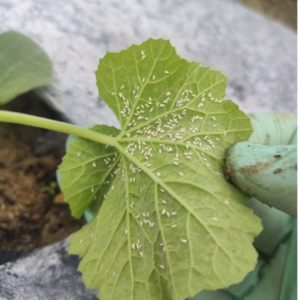By Clint Thompson
Alabama vegetable producers already thinking about their crop for next fall should be ready to combat whiteflies, says Andre da Silva, Alabama Extension vegetable specialist.

Da Silva focused on whitefly management during a recent webinar. He believes the environmental conditions will be conducive for populations to be high this summer.
“We are probably going to have a hot and dry summer. If we have a dry summer, whitefly populations will pop up. That’s our biggest concern in South Alabama,” da Silva said. “Whiteflies move from Florida to South Alabama, and then they try to migrate to central Alabama, and you don’t see much impact in the northern part of the state.
“Populations are very heavy in (South Florida). They are going to migrate to the northern parts of the Southeastern U.S. which includes Alabama, Georgia and north Florida.”
Whiteflies migrate from winter vegetables to spring vegetables to agronomic crops, like cotton, to fall vegetables and back to winter vegetables. The buildup of whiteflies would be concerning since they can cause feeding injury issues in vegetables and transmit multiple viruses. These include cucurbit leaf crumple virus, cucurbit yellow stunting disorder virus, cucurbit chlorotic yellow virus, squash vein yellowing virus and tomato yellow leaf curl virus.
Vegetables like squash, zucchini, cucumber, cantaloupe and snap beans are most susceptible to these viruses. Any fall production of these vegetables will be vulnerable to whitefly impact.
“As we start to get warmer and warmer, they are going to migrate to our locations. That’s the regions where we have most of the damage from whiteflies,” da Silva said. “If you’re in one of these regions growing vegetables, keep your eyes open for whiteflies. You’re probably going to have some virus problems.”









